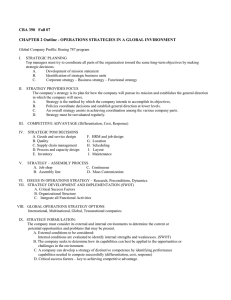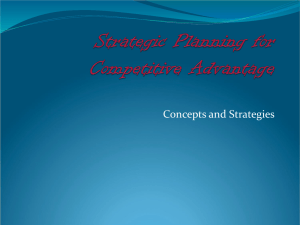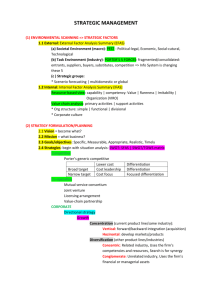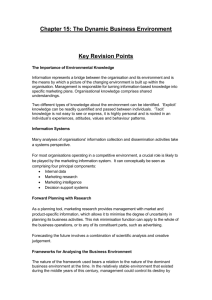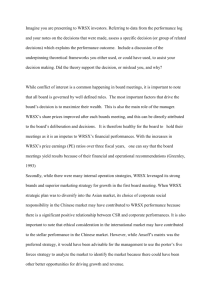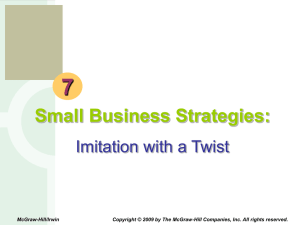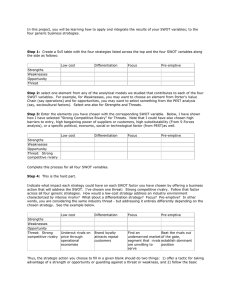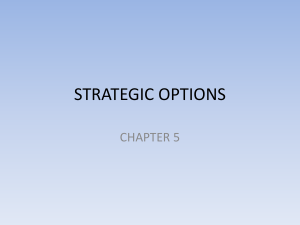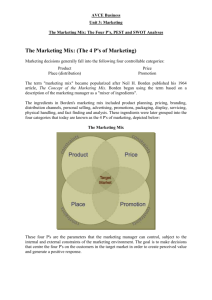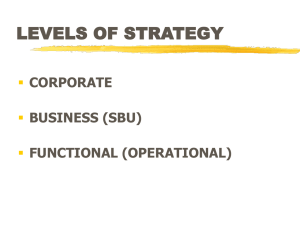planning
advertisement
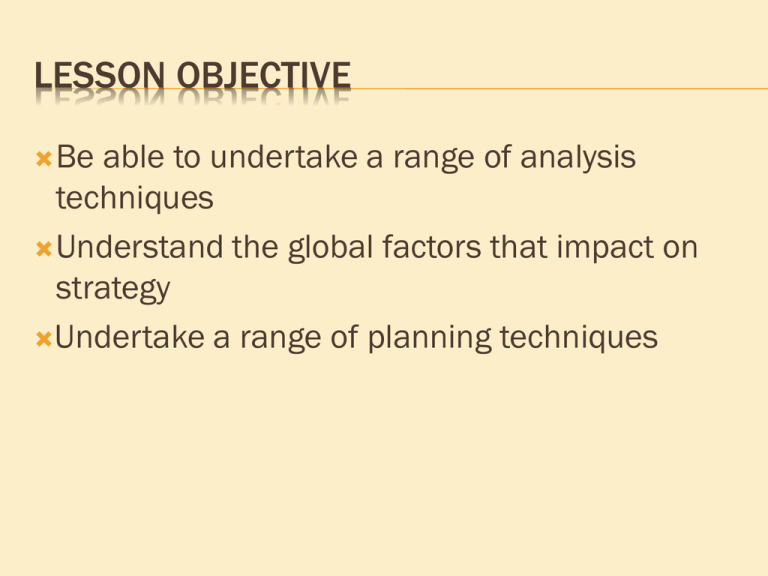
LESSON OBJECTIVE Be able to undertake a range of analysis techniques Understand the global factors that impact on strategy Undertake a range of planning techniques CORPORATE APPRAISAL - SWOT ANALYSIS What opportunities exist in the business environment? What is their profit making potential? What is the organisation’s ability to exploit? What threats might arise? How will competitors be affected? How will the company be affected? SWOT ACTIVITY Referring to the Hall Faull Downes Ltd case study and using your knowledge of SWOT give your appraisal of the company’s future and suggest what it is probably doing wrong. 25 mins GAP ANALYSIS PORTER’S GENERIC COMPETITIVE STRATEGIES To give organisations COMPETITIVE ADVANTAGE through 3 strategies: Cost leadership – being the lowest cost producer Differentiation – perceived uniqueness Focus – restriction of activities to niche or segmentation EXAMPLES OF GENERIC STRATEGY ORGANISATIONS Cost Leadership Tesco Dell Computers Easyjet Nissan Differentiation McDonalds Mercedes Apple Intel Starbucks Nike Focus – the focus of your strategy choice (niche) Ferrari Apple computing (differentiation focus) Wal Mart Ikea (cost leadership focus) SCENARIO PLANNING A PLANNING technique that builds various plausible views of possible futures of a business It is NOT forecasting the future USED IN 3 MAIN CONTEXTS Directional strategy – given the future scenarios what’s our best course of action? Contingency Planning – what risks and opportunities are we not considering at present? Learning & team building – what should be our company’s shared vision? PRODUCT MARKET STRATEGY – ANSOFF DIRECTION OF GROWTH A growth vector matrix with two dimensions Products Markets And four Growth Strategies – Market Penetration Market Development Product Development Diversification THE PLANNING FRAMEWORK What is Planning? Planning is the process of deciding what should be done, how and when it should be done and who should do it THE PLANNING GAP THE PLANNING HIERARCHY THE PLANNING CYCLE STRATEGIC PLANNING – GLOSSARY JOHNSON & SCHOLES (2002) Term Definition Mission Overriding purpose in line with values or expectations of stakeholders Strategic Intent ( Vision) Desired future state – the aspiration of the organisation Goal General statement of aim or purpose Core competencies That which provides distinctive competitive advantage Strategies Long term direction Strategic architecture Combination of resources, processes and competencies to put strategy into effect Control Monitoring of action steps to assess effectiveness & modify as necessary STRATEGIC PLANNING PROCESS Strategic analysis Thorough assessment of the organisation Strategic choice Strategic options that exist are considered Strategic implementation Selected stagey is developed and put into action STRATEGIC PLANNING PROCESS STRATEGIC ANALYSIS STRATEGIC CHOICE STRATEGIC IMPLEMENTATION PLANNING TECHNIQUES BCG Growth Share Matrix – Boston Cow SPACE – Strategic Position and Action Evaluation Directional Policy Matrices PIMS – Profit Impact of Market Share
